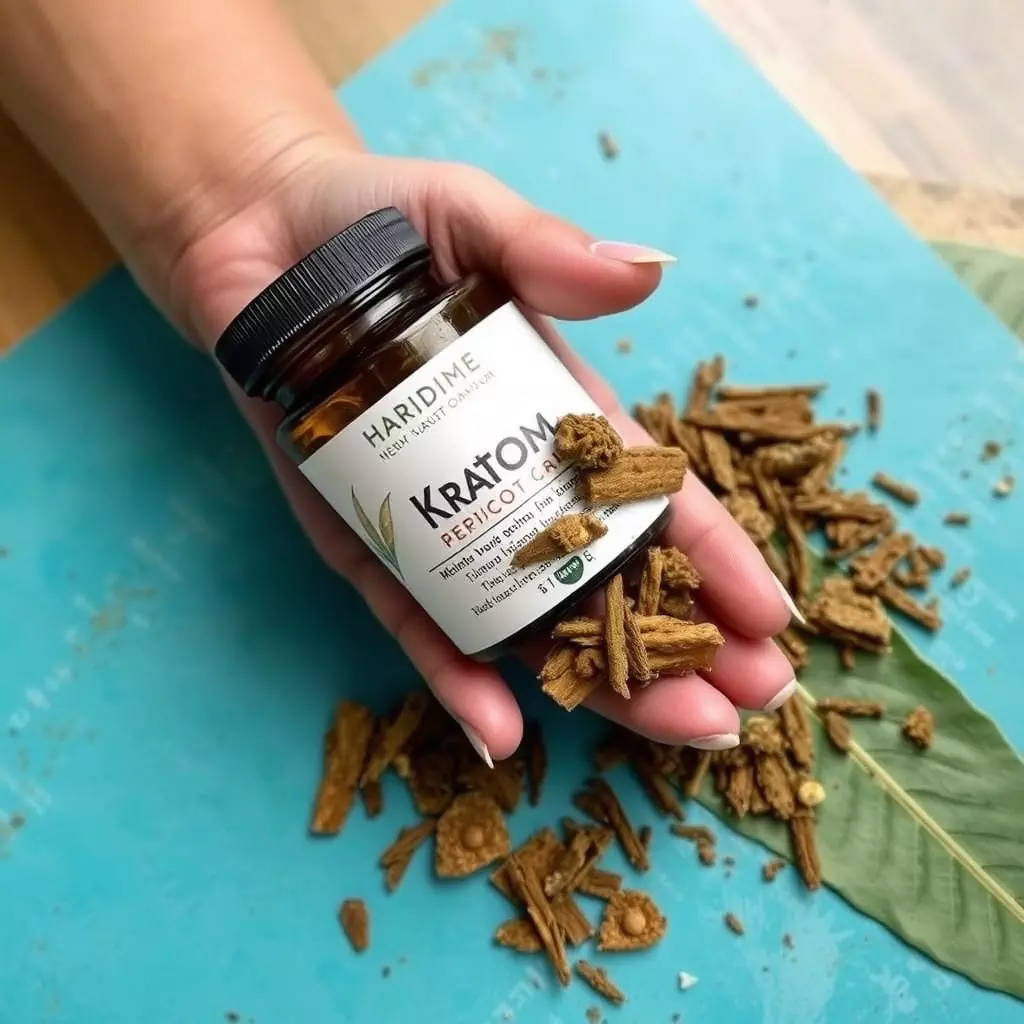Kratom, derived from Southeast Asia's Mitragyna speciosa tree, has garnered attention in athletic circles for its potential to offer joint pain relief and aid in muscle recovery and endurance. Its active compounds, mitragynine and 7-hydroxymitragynine, may interact with opioid receptors for analgesic effects, enhancing recovery from joint pain that athletes frequently experience. While the anecdotal success stories abound, it's important to approach kratom with caution due to its complex legal status, which varies by region and requires adherence to local laws. Safety concerns also arise, as kratom may lead to gastrointestinal issues, withdrawal symptoms, and potential dependency, necessitating a thorough health evaluation before use. Athletes should consult healthcare professionals for personalized guidance and ensure proper dosage and product purity to minimize health risks and maintain optimal performance standards. The ongoing need for scientific research into kratom's efficacy and long-term effects underscores the importance of a balanced and informed approach to its use for joint pain relief in athletic training.
Exploring the multifaceted relationship between kratom and athletic performance, this article delves into how this botanical substance can offer joint pain relief for athletes, facilitating muscle recovery and enhancing endurance. As we uncover the mechanisms behind its effects, we also navigate the complex legal landscape and safety considerations essential to its use in sports. Understanding kratom’s role in athletic performance support is pivotal for those seeking natural alternatives to optimize their training regimens.
- Unraveling Kratom's Role in Joint Pain Relief for Athletes
- Kratom's Impact on Muscle Recovery and Athletic Endurance
- Navigating the Legalities and Safety Considerations of Using Kratom for Athletic Performance Support
Unraveling Kratom's Role in Joint Pain Relief for Athletes

Kratom, a plant originating from Southeast Asia, has garnered attention in various health and wellness circles, including those focused on athletic performance. Its potential role in joint pain relief for athletes is an area of growing interest due to the physical demands placed on the body during training and competition. The active compounds found in kratom, known as mitragynine and 7-hydroxymitragynine, are believed to interact with the body’s opioid receptors, which can lead to pain relief. This interaction may help athletes manage the discomfort associated with joint pain, allowing them to maintain training regimens and recover more effectively. It’s important for athletes considering kratom for joint pain relief to approach its use with caution and under the guidance of a healthcare professional. The scientific community is still investigating the efficacy and long-term effects of kratom, and while anecdotal evidence suggests its potential benefits, more research is necessary to fully understand its role in athletic performance support. Athletes seeking joint pain relief with kratom should be aware of the potential for side effects and interactions with other medications, as well as the regulatory status of kratom, which varies by region and can impact availability and legality.
Kratom's Impact on Muscle Recovery and Athletic Endurance

Kratom, a plant from Southeast Asia, has garnered attention in athletic circles for its potential impact on muscle recovery and athletic endurance. Alkaloids present in kratom leaves, primarily mitragynine and 7-hydroxymitragynine, are believed to interact with the body’s opioid receptors, which may contribute to pain relief and muscle relaxation effects conducive to recovery. Athletes who incorporate kratom into their regimen often report its ability to alleviate joint pain, a common impediment to both training and performance. This pain relief can be crucial for athletes engaged in high-impact sports, enabling them to maintain an active lifestyle without the debilitating effects of chronic soreness or injury.
Furthermore, kratom is said to influence endurance by potentially enhancing energy levels and reducing fatigue. The stimulating effects of certain strains of kratom can help athletes push through their limits, completing workouts and competitions with increased stamina. This added resilience allows for prolonged training sessions, which are essential for building endurance. Additionally, the anti-inflammatory properties associated with kratom may aid in preventing muscle fatigue and swelling, supporting the body’s recovery process after intense exercise. As a result, athletes using kratom as part of their post-exercise routine may experience faster recuperation times, better overall performance, and a reduced risk of overtraining injuries. However, it is imperative to use kratom with caution and under the guidance of a healthcare professional, given its potential for interaction with other substances and its regulatory status in various regions.
Navigating the Legalities and Safety Considerations of Using Kratom for Athletic Performance Support

When considering the use of kratom for athletic performance support, it’s crucial to navigate the complex legal landscape that governs its use. Kratom, derived from the leaves of the Mitragyna speciosa tree, has been a subject of scrutiny by regulatory bodies worldwide due to its potential effects on energy levels and pain relief, including the alleviation of joint pain. As of the current understanding, kratom’s legal status varies by jurisdiction, with some regions allowing its use for specific purposes, while others have imposed restrictions or outright bans. Athletes aiming to utilize kratom must be well-versed in their local laws to avoid unintentional violations of regulations, which could lead to disqualification or other penalties within their sport.
Safety is another pivotal aspect when incorporating kratom into an athletic regimen. While some users report positive effects on joint pain relief with kratom, it’s not without potential risks. The substance can interact with other medications and supplements, and its long-term effects are still being studied. Adverse effects may include gastrointestinal issues, withdrawal symptoms, and dependency. It is imperative for athletes to consult with healthcare professionals before integrating kratom into their training or competition routines. A thorough assessment of individual health conditions, potential drug interactions, and the risk of adverse effects should be part of this evaluation process. Additionally, monitoring dosage and being mindful of the product’s sourcing and purity are essential steps to ensure safety and avoid contaminants that could compromise an athlete’s performance or health.
In conclusion, the exploration into how kratom can offer joint pain relief for athletes has shown promising potential, particularly in its ability to modulate pain and facilitate a more robust response to physical exertion. The analysis of kratom’s impact on muscle recovery and athletic endurance suggests beneficial effects that may enhance an athlete’s performance. However, it is imperative to approach the use of kratom with caution, as legal status and safety vary widely. Athletes should be well-informed about the regulations governing kratom in their sport and consult with healthcare professionals before integrating it into their training regimen. With a clear understanding of its potential risks and benefits, kratom may serve as an alternative therapeutic option for those seeking natural avenues to support athletic performance, with particular attention paid to joint pain relief.






